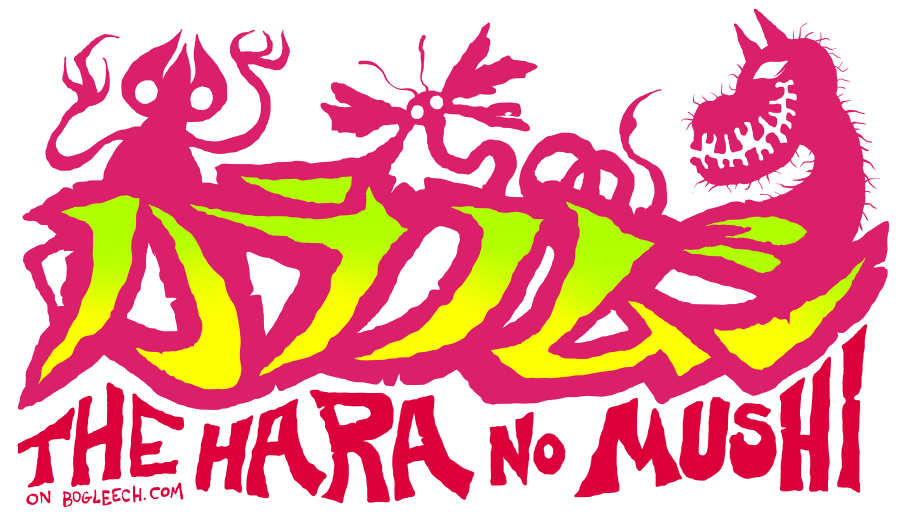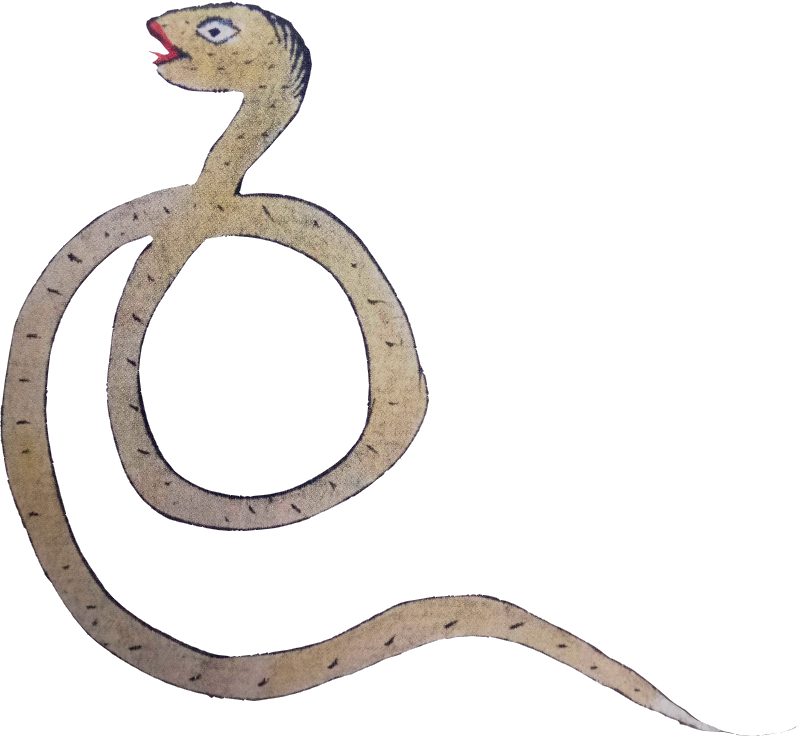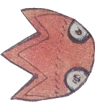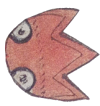
DAY TWENTY THREE: TONSHI NO KAN MUSHI
("Liver Bug of Sudden Death")
Written by Jonathan Wojcik, Researched and Translated by Rev Storm

This is the very last one we're reviewing that's just a plain and simple worm, and it's another one with very little information except for the fact that it just...kills you. That's it. It bites you in the liver and you die.
Design Review:
Though it's one of the simpler worm ones, I think the more humanlike eye, black "hairdo" and red snake mouth have a lot of personality to them (Rev felt it looked like Peter Lorre, which it does). The description just calls that a head that's "flat on top" and black.
TODAY'S REAL WORLD PARASITE:
Halicephalobus gingivalis

I'm sure it will come as no surprise to you that there is, in fact, a parasite that simply bites into your guts and kills you dead...at least, when it is a parasite.
This nematode is our first example of a "facultative" parasite, which means that it actually doesn't have to live parasitically like any of our previous worms, which would make those "obligate" parasites. The species can get by just fine as a soil-dwelling scavenger, feeding on wet, rotten vegetation, carrion and feces.
The worm can, however, enter the body of an animal through an open wound or any orifice, just as it might wiggle its way into a juicy corpse or decomposing squash. Normally, a non-parasitic organism finding itself in a living body would lack the adaptations necessary to survive for very long, but gingivalis seems to be capable of thriving in living tissues, which perhaps gives us a nice glimpse into the evolutionary transition between a free-living and parasitic lifestyle.
Possessing distinct sexes, the males and females aren't adapted to find one another and mate inside a host, but they don't need to, because the females are also parthenogenetic, or capable of "cloning" themselves without fertilization. Surrounded on all sides by a buffet of pure protein, the females begin to multiple wildly within the body and cause significant tissue damage as they make their way through such organs as the brain, kidneys, spinal column and yes, sometimes the liver. Needless to say, their tunneling and multiplying doesn't take long to shut down any organ they spread to.
NOW FOR THE GOOD NEWS: the natural hosts of these worms are only hoofed, grazing mammals such as cattle, sheep, and most especially equines. They are generally thought of as a disease primarily of horses, though it is certainly a devastating one, and it's no laughing matter that many infections happened because the poor animals were forced to live in filthy conditions.
Still, we are only covering parasites in this feature that can at least rarely infect humans. This has happened to six people that we know of in recent history, but I believe undiagnosed cases are probably common in poorer parts of the world. It is, after all, so poorly understood that we don't even know the worm's full life cycle or how exactly it survives when it goes parasite, and all six of those identified human cases were only found post-mortem, completely overlooked by medical experts when the patients still could have been saved.
So overlooked, in fact, that of those six victims, two of them died because a third one was an organ donor...and each of his infected kidneys went to a different recipient before anybody noticed they were the donor's actual cause of death in the first place.
NAVIGATION:









































































































